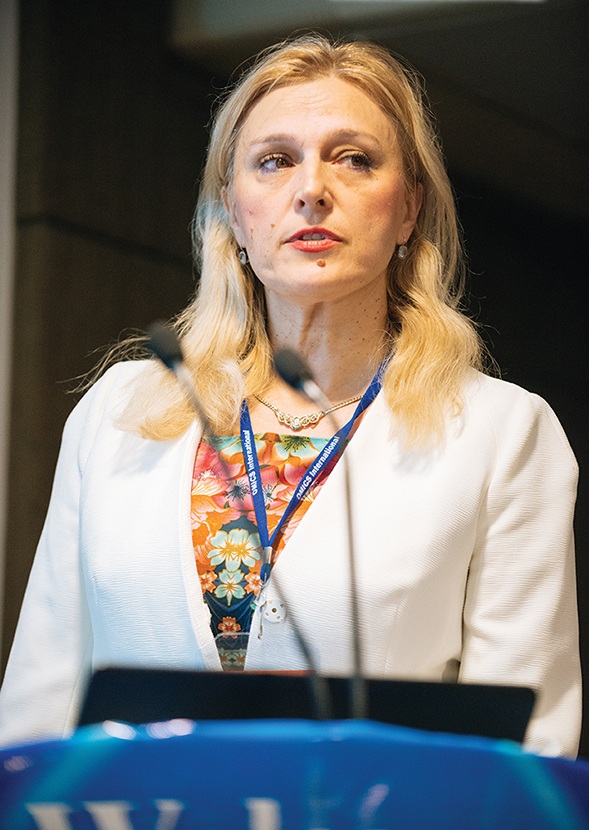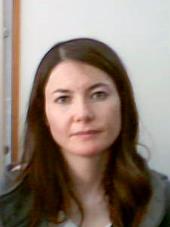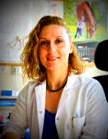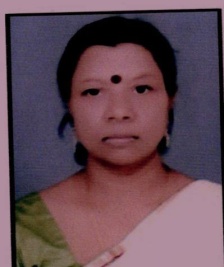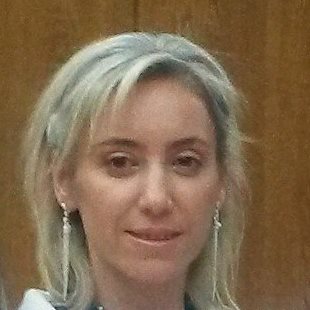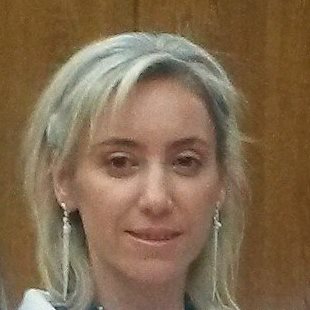Scientific Program
Keynote Session:
Title: Reptiles morphology-importance in the veterinary medicine
Biography:
Srebrenka Nejedli is full professor in the Department of Anatomy, Histology and Embryology Faculty of Veterinary Medicine University of Zagreb. She has got two projects, she is a reviewer and member of the Editorial board of two journals and she is invited speaker and scientific-committee and organizing-committee member of international scientific congresses. She has formed and designed the subject 'Morphology of reptiles' in the Faculty of Veterinary Medicine University of Zagreb and is leader of it and she is member of EAVA and European Aquaculture Society.
Abstract:
In the veterinary medicine, exotic animal species such as reptiles have an increasing importance. Understanding their morphology is also the foundation for the use of drugs, surgical procedures and other veterinary procedures. Therefore, it is important to know the the variety of their body regions as to the locomotion, skeleton construction and musculature; fundamental differences in construction of digestion duct because of different ways of feeding, breathing and construction of respiratory organs due to their lifestyle (in water or on earth); construction of urinary and reproductive system; heart and blood vessels, particularly the relevant ones for blood taking; central and peripheral nerve systems and their accessibility for local anaesthesia; the endocrine system for understanding the reproduction and adaptation to the environment; the sensory organs and their build in relation to lifestyle and adaptation to the environment and also skin texture to understand their adaptation to the environment.
Title: In vitro assessment of sperm quality in mammals: A review
Biography:
Clara Malo obtained her degree in Veterinary Science from University of Zaragoza (Spain) in 2005 and her Masters degree in 2006 which focused on Animal Reproduction. She was awarded her PhD entitled “Designing freezing boar semen extenders” in 2009 after which, she was appointed as a faculty fellow in the Department of Reproduction and Obstetrics at Zaragoza University. She joined the Camel Reproduction Center in 2013 as Head of Andrology where her research interests are in developing extenders for fresh and frozen sperm, sperm freezing, in -vitro sperm-oocyte interactions and embryology.
Abstract:
Conception is a complex phenomenon consisting of sperm transport, capacitation and acrosome reaction, oocyte maturation, ovulation, female endocrine status, normalcy of fertilization and embryo development. Understanding the physiology of spermatozoa in their passage towards fertilization enhances our abilities to maximize results with assisted reproductive technologies. An analysis of semen characteristics can provide a reasonable basis upon which to develop a strategy for maximizing fertilization success. Since standard semen evaluation tests are not sufficient to predict animal fertility accurately, researchers have sought laboratory assaysand/ molecular tests that would accurately predict the fertilizing potential of a semen sample. Several different fluorescent stains have been developed asa markers for the integrity of various cellular organelles within spermatozoa (e.g. plasma membrane, capacitation and acrosome status, mitochondria, DNA). , The results of such analyses can be measured microscopically; however this method only measures a small number of spermatozoa within a population, is time-consuming, can be subjective and generally measures sperm attributes individually. On the other hand flow cytometry uses fluorescent markers too accurately and rapidly measure sperm attributes on a large scale. Other tests have been developed to measure the reactive oxidative status of sperm which is important for successful sperm handling and preservation. Sophisticated techniques have also been developed to study the interactions between gametes; these include the sperm-oocyte binding test, in vitro fertilization and embryo production, and ICSI. The current review addresses the different techniques used for semen analysis as well as describes its clinical value in reproductive biology.
Title: Global poultry production and its substantial contribution to nutrition, food security and poverty alleviation in many developing countries
Biography:
Yusuf Leonard Henuk is the Professor of the Department of Animal Science, Faculty of Agriculture at University of Sumatera Utara (USU), Medan, North Sumatera, Indonesia. He received a Bachelor’s degree (S1: ‘Sarjana’) from the Faculty of Animal Science, the University of Nusa Cendana in Indonesia from 1980-1984. He obtained a Master in Rural Science (M.Rur.Sc.) from the University of New England from 1991 – 1995 and continued with a Doctor of Philosophy (Ph.D) from the University of Queensland from 1998 – 2001. Both in Australia. He participated in courses of “Arabic Language” and “Poultry Production and Health” organized by the Egyptian International Centre for Agriculture (EICA), Cairo, Egypt. He was a twice Visiting Professor to the Department of Poultry Science, Texas A&M University, College Station, USA. Prof. Henuk has published many articles in international journals such as Poultry Science, World’s Poultry Science Journal as well as presented in many International Scientific Meetings as a Keynote Speaker.
Abstract:
Poultry farming and management is the process of raising domesticated birds such as chickens, ducks, turkeys and geese for the purpose of producing meat and eggs for food. Globally, the distribution of the four main species of poultry farming (Figure1) are chickens (90.55%), ducks (5.53%), turkeys (2.09%), and geese & guinea fowl (1.67%). At a global level, three main types of poultry production systems can be considered: broilers, layers and rural backyard (Figure 1). Poultry production is the fastest growing agricultural sub-sector, especially in developing countries. It makes a substantial contribution to food security and nutrition, providing energy, protein, and essential micro-nutrients to humans, with short production cycles and the ability to convert a wide range of agri-food by-products and wastes into edible meat and eggs. Poultry also contributes to poverty alleviation in many developing countries. Poultry production is a major asset representing capital creation and in many cases, a source of income for farmers. Poultry can be sold in times of crisis and acts as household insurance throughout the globe. Many new farmers start with poultry, which can be a comparatively low-investment enterprise with a reasonably fast work time from investment to revenue. Around 70% of poultry meat and 65% of eggs are produced in intensive ways. Alternative to intensive poultry farming is free range and organic farming using lower stocking densities. Poultry represent the world’s major source of eggs and meat that supports a food industry in virtually every country. Chickens are now more popular than beef in the US and the UK. The world’s consumption of meat is divided among pork, poultry, beef and mutton at a ratio of 4-3-2-1, respectively. Intensive poultry production has historically played a leading role among agricultural industries throughout the world. This leading role has led to the development of a highly technified global industry integrated by large, automated facilities and marketing units versus other livestock production systems. There is an increasing demand for poultry meat mainly due to its acceptance by most societies, lack of religious restictions, low cost and positive health attributes such as relatively low cholesterol content. It has been predicted that the ratio of the world’s consumption of meat in 2025 will be as follows: (in 1,000 metric ton) poultry meat (131,255), pork (131,001), beef (77,766) and mutton (17,438).
Title: Effect of various levels of energy supplementation on nutrient utilization, draught performance and physiological responses of draught camels (Camelus Dromedarious) fed groundnut straw based diets
Biography:
Jagdish Lal Choudhary developed a new technology of bypass protein feeding to lactating and growing animals. It is very useful and popular technology in the world today. He is the recipient of ICAR award of Senior Research Fellow during Ph.D. Programme (1996). His academic career has been excellent. During this period he contributed 56 papers in referred national and international journals, 22 papers in proceedings of national and international conferences, authored 3 books, contributed chapters in 7 books and authored 4 manuals, guided 5 Ph.D. and one M.Sc. thesis. Participated in 5 summer, winter and refresher courses and attended 40 Seminar/Conference/Workshops/Symposia and conducted 153 trainings at KVK, Sirohi.
Abstract:
The experiment was conducted on 9 draught Camels (8-9 years old of 572 ± 10.18 Kg. BW) to study the effect of energy supplementation fed Groundnut straw based diets on nutrient utilization, draught performance and physiological responses of draught camels. The randomly selected camels divided into three equal groups were offered ad lib Groundnut straw supplemented with either low energy (65% TDN) in concentrate (T1), medium energy (70% TDN ) in concentrates ( T2), or high energy (75% TDN) concentrates (T3). The mean DMI was higher (P<0.05) in T3 as compared to T2 and T1 groups. But a non significant difference was observed between T2 and T1 groups. The voluntary water intake (VMI), DCP and TDN intake was significantly (P<0.05) higher in T3 and T2 as compared to T1. There was a significant difference between T1, T2 and T3 for DCPI and TDNI. The digestibility of DM, CP and NFE was significant (P<0.05) in Camels fed 75% TDN concentrate mixture but there was non-significant difference between the treatment for digestibility of OM, CF and EE. While was a significant (P<0.05) Improvement in DCP and TDN contents in T3 as compared to T1 was observed. The DE and ME contents did not differ significantly among the groups. The draught (kgf) and power output (hp) was higher (P<0.05) in T3 as compared to other treatment group. The values of pulse rate, respiration rate and rectal temperature were found to increase with increase in draught and duration of carting. The maximum variation in physiological responses was noted at 22 percent draught. However, increase in rectal temperature did not show any remarkable effect at higher draughts. It was concluded that ad lib feeding of groundnut straw supplemented with high energy concentrates mixture resulted in improved nutrient utilization and draught performance by the camels without any apparent ill effect on the health.
Oral Session 1:
- Animal Husbandry | Veterinary Medicine | Poultry Farming & Management | Animal Nutrition | Animal Reproduction
A PHP Error was encountered
Severity: 8192
Message: trim(): Passing null to parameter #1 ($string) of type string is deprecated
Filename: pastconference/past-program-schedule.php
Line Number: 354
Backtrace:
File: /efsdata/meetingsint-com/application/views/pastconference/past-program-schedule.php
Line: 354
Function: trim
File: /efsdata/meetingsint-com/application/controllers/Pastconference.php
Line: 128
Function: view
File: /efsdata/meetingsint-com/index.php
Line: 317
Function: require_once
Title: Influence of NSP-degrading enzymes on growth performance, carcass traits and sensory meat quality of broiler chickens fed wheat-based diets
Biography:
Guoda Stanyte has a higher education and industrial, management and scientific work experience in animal husbandry field, and constantly purposefully improves her professional qualification. Currently she is a PhD student specializing in poultry and had performed trials with laying hens and chicken broilers which are connected to EU common agricultural policy (CAP) and more efficient use of native raw materials and non-starch polysaccharides (NSP) degrading enzymes in poultry diets. Guoda Stanyte published 24 publications under animal husbandry topic, mostly in international scientific editions since 2016. She is a member of World's Poultry Science Association.
Abstract:
Improving digestibility of NSP in poultry diets is one way in which producers can positively impact both feed efficiency and animal nutrition. NSP-degrading enzymes can save money by uplifting the average feedstuff quality, increase the flexibility to use a wider range of raw materials and reduce the risk of animal gut disturbances. Objective: objective of this trial was to evaluate the influence of NSP-degrading enzymes on growth performance, carcass traits and meat sensory quality of broiler chickens fed wheat-based diets. 500 Ross 308 chicken broilers were fed with two basal wheat-based diets. Dietary treatments were divided into two groups: control diet without enzyme supplementation and experimental diet supplemented with NSP-degrading enzymes. A sensory panel for the analysis consisted of 6 assessors. A structured numerical scale was used for evaluation of the intensity of each attribute. Intensity of meat sensory attributes, such as overall odour, non-typical odour, taste, non-typical taste, color intensity was determined. NSP-degrading enzymes increased broiler chicken‘s preslaughter weight by 2.5% (p≤0, 05) and decreased feed consumption by 1.3%. Boneless chicken breast fillet without skin was 4% bigger (p≤0, 05) comparing to control group‘s chicken breast. Chicken breast external fillet and inner fillet in the experimental group were respectively 5.6% and 3.8% bigger. Sensory analysis determined that experimental group’s cooked chicken meat had 7.5% (p≤0, 05) more intense odour. The obtained results demonstrate that adding NSP-degrading enzymes to chicken broilers diets had positive effect on their carcass traits and feed consumption, besides that, it had no negative effect on sensory meat quality.
Title: Molecular characterization of Giardia Duodenalis among lambs in Eastern Region of Turkey
Biography:
Adnan Ayan has completed his PhD at the age of 31 years from Adnan Menderes University Faculty of Veterinary, Department of Parasitology and Postdoctoral Studies from Faculty of Veterinary, Van Yuzuncu Yil University, Turkey. He is the Assistant Professor at Van Yuzuncu Yil University, Faculty of Veterinary, Department of Genetics. He has published more than 17 articles in peer-reviewed journals.
Abstract:
In this field study the researchers aimed investigating the molecular characterization of Giardia duodenalis among lambs in Eagean Region of Turkey. A total of 109 faecal samples from lambs (at the age of 1 to 45 days, of both sexes) were collected. Thirthy-seven out of 109 lambs were positive with an overall prevalence of G. duodenalis was 33.94%. Faecal samples of all 37 lambs, diagnosed Giardia-positive by microscopy, were found also positive by nested PCR. The β-giardin nested PCR assay gave positive results for all samples (100%). The results of this field study presented prevalence of giardiasis among lambs. Further studies are warranted with assemblage detection and sequence analysis of isolates.
Title: Potency of selected herbs on inhibition of ammonia producing bacteria
Biography:
B R O Omidiwura, a nutritional Biochemist and Phytochemist, has completed his PhD at the age of 35 years from University of Ibadan, Nigeria. He holds administrative positions in the University. He has published more than 20 papers in reputed journals and has been serving as Deputy editor in chief of Tropical Animal Production Investigations. He works with seasoned scientists; Dr Adebisi F. Agboola, an Animal Nutritionist and Feed Biotechnologist, Dr A. O. Adekambi, an Environmental Microbiologist and many others.
Abstract:
In effort to combat environmental pollution, improve animal production and avoid drug residue, producers have resorted to the use of phytobiotics to inhibit ammonia producing microbes in the gut. Freshly harvested Eucalyptus camaldulensis, Mangifera indica, Saccharum officinarum, Chromolaena odorata, Azadirachta indica and Carica papaya leaves were air dried, blended and extracted using five concentrations of solvent (100% water, 70% water + 30% methanol, 50% water + 50% methanol, 30% water + 70% methanol and 100% methanol). The antibacterial activities of the extracts and antibiotics (streptomycin and doxycycline) as control, were tested according to standard procedures against both gram positive (Bacillus subtilis, Staphylococcus aureus) and gram negative (Escherichia coli, Vibrio cholerae) ammonia producing bacteria. The inhibitory effect of 100% water, 70% water + 30% methanol and 30% water + 70% methanol extracts of Eucalyptus camaldulensis and Mangifera indica was not significantly different from that of streptomycin on all bacteria tested while doxycycline showed the lowest inhibitory activity. Saccharum officinarium extract from 30% water + 70% methanol and 100% methanol had significantly better inhibitory effect on Escherichia coli than the antibiotic drugs, Also, extract of Chromolaena odorata, Carica papaya and Azadirachta indica at 100% methanol had no significant difference from the inhibitory effect of antibiotics on Staphylococcus aureus, Vibrio cholera and Escherichia coli respectively. It can be concluded, therefore, that 100% methanol extraction of the herbs can be an effective alternative to synthetic antibiotics in reducing ammonia producing bacteria in animal production.
Title: Oral administration of red and yellow watermelon rind act as as a hyphotermic agent in broiler chicks
Biography:
Edi Erwan is the Dean for Department of Animal Science, Faculty of Agriculture and Animal Science, State Islamic University of Sultan Syarif Kasim Riau, Indonesia.Edi Erwan's had finished 12 research works with 76 citations and 621 reads, including: Orally, Posters etc
Abstract:
Watermelon rind contains source of amino acids, citrulline. Citrulline is physiologically important amino acid in birds. However, the function of this amino acid has not yet been fully understood. In this study, we therefore examined the effect of red and yellow watermelon rind extract in term of regulating body temperature and feed intake in broiler chicks. Accordingly, the objectives of the present study were to determine the effect of oral administration of watermelon rind extract on feed intake and body temperature. In this experiment , day-old broiler chicks were housed in a group until the experimental day (4 days old). On the day of the experiment, each chick (5 days old) was orally administered distilled water, red watermelon extract or yellow watermelon extract by the elastic plastic needle on small syringe. Feed intake and body temperature changes were measured at 30, 60 and 120 min. The results in experiment revealed that watermelon juice significantly decreased body temperature. However, oral administration of the watermelon extract did not significantly alter feed intake in chicks. we conclude that oral administration of both red and yellow watermelon juice may play a potent role in declining body temperature. Red watermelon rind extract is more effect on thermoregulation in broiler chicks than yellow watermelon rind.
Oral Session 2:
- Veterinary Diagnosis & Treatment | Livestock and production| Poultry Farming & Management | Veterinary Epidemiology
Title: An innovative review on the relation of cafestol and kahweol in coffee to coronary heart disease
Biography:
Betul Ozaltun completed her education Ankara University faculty of medicine, she studied at Adana numune hospital cardilogy depertment between 2011-2015. For one years she is working in Ömer Halisdemir university hospital.
Abstract:
The relation of coffee consumption to coronary heart disease has been extensively studied. Cardiovascular diseases have been denominated as the world's “biggest killer” and the principal cause of death among nontransmittable diseases. Coffee contains various bioactive compounds that can be included alkaloids such as caffeine and trigonelline, phenolic acids, diterpenes such as cafestol, lignans, flavonoids. Dietary polyphenols, both in vitro and in vivo have been demonstrated to display anti-atherosclerotic properties by effectively modulating endothelial and vascular function; haemostasis and platelet function; and inflammatory biomarkers.
Coffee has two diterpenoids named Cafestol and Kahweol which involve in increasing cholesterol, but only caffeine in coffee has pharmacological effects. The diterpenes cafestol and kahweol have been implicated as the components in boiled coffee responsible for its hypercholesterolaemic effects. The amount of cafestol and kahweol in coffee depends on the method of brewing. The most of amount this two materials release when was contacted boiled water. Diterpenes of Cafestol and Kahweol are part of boiling coffee, which is responsible for increasing blood cholesterol. Their amount in a coffee beverage is affected by the brewing manner. Surveys have shown dose-dependent effect of Cafestol and Kahweol on elevating serum cholesterol levels. Boiled coffee contains the highest concentrations such as Scandinavian-style and Turkish-style while, trace amounts see in instant, drip-filtered and percolated coffees.
As a result, coffee consumption and coronary heart diseases are contradictory but, in general coffee can affect coronary heart diseases and these effects can depend on method of brewing coffee, brewing time, genetics such.
Title: DNA methylation mediated cell - cell communication in bovine preimplantation embryos
Biography:
Mohammed Zidane has completed his PhD and Postdoctoral studies from the Institute of Animal Science, Animal Genetics/Breeding and Husbandry group, Faculty of Agriculture, University of Bonn, Germany. Mohammed Zidane had a Master of Animal Reproductive Physiology and Bachelor of Animal Science. Mohammed Zidane published several papers in international journals and he presented in several international conferences.Mohammed Zidane is a member of organizing committee of the international meeting on Veterinary and animal Science.
Abstract:
Suboptimal embryo culture condition decreases embryonic quality and hinders the developmental competence by altering the expression and DNA methylation patterns of developmentally related genes and pathways including focal adhesion pathway1,2.
Focal adhesion is vital for several cellular functions and it refers to communication of cell with its extracellular matrix (ECM)3. However, the epigenetic regulatory mechanism through which culture condition altered the embryo development via focal adhesion pathway remains unclear. Hence, we aimed to investigate the effect of different culture media using continued or stage specific supplementation of epidermal growth factor (EGF) and/or hyaluronic acid (HA) on the expression and DNA methylation patterns of the focal adhesion pathway and the subsequent consequences on the development and quality of bovine preimplantation embryos. Results indicated that media supplemented with EGF + HA increased the mRNA and protein expression levels of focal adhesion pathway genes. Moreover, blastocysts cultured in media supplemented with EGF + HA during embryonic genome activation period (EGA) exhibited higher expression level of focal adhesion pathway compared to those supplemented before or after EGA. Furthermore, higher mRNA expression accompanied with alteration in the DNA methylation pattern (promoter and distal promoter) of focal adhesion pathway related genes. Blastocysts with higher expression of focal adhesion pathway exhibited reduction of reactive oxygen species and apoptotic cells with higher cryotolerance ability. In conclusion, the dynamic changes in the DNA methylation pattern and subsequently embryo development may rely on its epigenetic adaptability that resulted from interactions with surrounding environment via cell adhesion to ECM molecules.
Title: Gut histopathology of broiler chicks fed sodium propionate supplemented diets
Biography:
Adebisi F Agboola is a nutritional biochemist and feed biotechnologist has completed her PhD at the age of 37 years from University of Ibadan. She holds various administrative positions in the University. She has published more than 30 papers in reputed journals and has been serving as a reviewer for more than five reputable Journals. Dr. Agboola is a versatile scientist who strives daily to expand her professional horizon through networking and exchange of ideas with colleagues from all over the world in a bid to contribute her quota in poverty alleviation through animal nutrition.
Abstract:
The indiscriminate use of antibiotics in poultry production has been considered to have negative implication on humans. Therefore, the use of a viable alternative becomes necessary. The objective of this study was to investigate the effects of graded levels of sodium propionate on gut histopathological condition of broiler chicks in an experiment that lasted for 21 days. Three hundred and thirty six one-day old Arbor Acre broiler chicks were randomly allotted to 7 dietary treatments with 6 replicates of 8 birds each in a completely randomized design. Treatment 1 was the basal diet/control diet (corn-soyabean), treatment 2 was antibiotic diet (0.11%). Treatments 3, 4, 5, 6 and 7 contained the basal diet and 0.1%, 0.2%, 0.3%, 0.4% and 0.5% sodium propionate inclusion respectively. At day 21, two birds per replicate were sacrificed and about 5cm of the ileum was excised for histopathological examinations. Sample sectioning of the ileum of birds fed basal diet revealed sloughing of surface enterocytes, cryptal and villi epithelia necrosis while those on antibiotic diet showed mild villi atrophy, clubbing of villi and cryptal villi epithelia necrosis. Birds fed with 0.1% and 0.2% sodium propionate diets showed moderate villi atrophy and sloughing surface of enterocytes, clubbing and fusion of villi. However, ileum sectioning of birds fed 0.3% - 0.5% sodium propionate supplemented diets revealed no observable lesions and moderate villi atrophy. There was improvement in the integrity of the ileum as well as host health as the level of sodium propionate inclusion increases across the dietary treatments.
Title: Synovial fluid as an alternative viscoelastic material (Video Presentation)
Biography:
Basak Kurt has completed her PhD at the age of 29 years from Kafkas University and Postdoctoral Studies from Faculty of Veterinary Medicine, Kafkas University, Turkey. She has been serving as an Assistant Professor in the same university. She has published more than 15 papers in reputed journals and has been worked in many projects as manager and researcher.
Abstract:
Viscoelastic materials are a wide group of composite which have rheological properties. These materials are used for two purposes: Viscosupplementation and viscosurgery. When the viscoelastics applied to provide lubricity facilitates mechanical movement or used as a matrix protector, they are referred as viscosupplements. When they applied to prevent adhesions postoperatively, they are referred as viscosurgicals. Hyaluronic acid, hydroxypropyl methylcellulose, chondroitin sulfate, polyacrylamide and collagen are known as viscoelastic materials. Hyaluronic acid occurs naturally in the extracellular matrix of many tissues in all species. It has no side effects. It has high molecular weight and shows viscoelastic and pseudoplastic behaviours. Because of these properties, hyaluronic acid is the most commonly used viscoelastic substance in tendo, eye, ear and neurosurgery. Hyaluronic acid reduces friction between moving surfaces and prevents bacterial contamination by acting as a barrier. Therefore it helps to regain the normal function of the tissues or organs and prevents complications. Synovial fluid is a viscous material that is located in joint cavities. It protects the cartilage and soft tissues by means of its rich content of hyaluronic acid. The thixotropic effect of synovial fluid provides high resistance against to mechanical load. In the treatment of the joint diseases synovial fluid replacement is used for the purpose of viscosupplementation. There is limited research on the use of synovial fluid as a source of hyaluronic acid for viscosurgery. In this presentation, we will discuss whether synovial fluid can be an alternative to viscoelastic materials in veterinary surgery or not.
Keynote Session:
Title: Implant-related osteomyelitis after hip and limb prosthesis in dogs and cats
Biography:
Ozlem Sengoz Sirin has completed PhD in 2008 from Ankara University and postdoctoral studies from Mehmet Akif Ersoy University School of Veterinary Medicine. She was the coordinator and instructor of the first AOVET course in Turkey. Additionally, she is working in group of TINNET as a delegate of Turkey (TINNET is a European research network funded by the COST program under the Action number BM1306). She finished six important projects in her country and still she is dealing with two projects. She gives orthopedic trainings in her country.
Abstract:
Osteomyelitis is a term used to describe the infection that occurs in the bone. Bacteria, fungi, protozoa and viruses can cause osteomyelitis. Corrosion in foreign bodies and metallic implants is also indicated as the cause of osteomyelitis. The purpose of this study was to examine the causes of osteomyelitis in our prosthesis cases. Six patients with amputation indications and three patients with total hip prosthesis indications were included in the study. Electromyography recordings were taken before the operation of the affected limb and it was evaluated that there was no neurological damage suitable for the prosthesis. When everything is done according to surgical rules, complications still arise. Complications are inevitable in some cases when appropriate implantation is used, in which implant corrosion is considered to prevent biofilm formation. Radiological and histopathological examinations confirmed that the diagnosis of osteomyelitis in all complicated patients. The causative agent of osteomyelitis was isolated and identified by microbiological examination in cases.
Title: Relationship between plasma GH, metabolites, lipogenic genes and MMP3 expression in different tissues of PD3 chicken line during summer season and role of fermented yeast culture in alleviating heat stress
Biography:
N Anand Laxmi is working as Principal Scientist, in Directorate of Poultry Research, Rajendranagar, Hyderabad, India. She was working earlier as Principal Scientist, at National Dairy Research Institute Karnal, Haryana, India. Her field of specialization is Endocrinology and Reproductive physiology. She has expertise in cell culture. She has authored research papers in reputed National and International Journals.
Abstract:
The present experiment was conducted for eight weeks to observe the effect of high ambient temperature prevailing during month of April and May in summer season on growth hormone (GH), metabolites, expression of lipogenic and matrix metalloprotein genes in different tissues . It was hypothesized that supplementing fermented yeast culture (Commercial,Unigrow), to chickens( pullets) during summer may alleviate heat stress by having an effect on growth hormone, metabolites and on expression of genes . The effect of high ambient temperature on circulatory GH is not known. Three groups of birds (PD3 line) were taken whose average body weight at 17 weeks of age was 950g. One group served as control which did not receive any dose of supplement (FYC), the other two groups were supplemented with 0.5g/kg and 1.25g/kg of feed. The control group was offered feed ad libitum. Feed intake and Body weight were recorded at weekly intervals. Blood was collected at weekly intervals; plasma was separated and stored for estimation of hormone and metabolites. Relative expression of genes was conducted for liver, hypothalamus and magnum portion of the reproductive tract. It was observed that, during summer season, the concentration of GH in the T2 was significantly (P<0.05) higher in the control group,but was not significantly different when compared with the T1 group. The expression of SCD, FAS lipogenic genes and MMP3 genes was higher in the control group when compared with the T2 group. However, the expression was not significantly different when compared with the T1 group. Disturbance of lipogenesis occurs as a result of up regulation of hepatic lipogenic enzymes through an increase in mRNA gene expression level of these enzymes (Peiet al., 2009). The concentration of metabolites, cholesterol and melanoaldehyde (MDA) were also higher in the control group. It is reported by Lin et al. (2010), that heat stress causes increase in plasma MDA levels. b glucans present in the yeast cell wall have cholesterol lowering effects (Zekovic et al., 2005). Fermented yeast culture is a source of less number of live yeast cells and other factors like vitamins, minerals and amino acids. Hence the results indicate that higher ambient temperature increases the concentration of GH hormone, cholesterol, MDA, expression of lipogenic and matrixmettaloproteinase genes in different tissues of chickens during prelaying period and supplementation of higher dose of FYC decreases the level of hormones, metabolites and expression of genes. The supplement may be able to alleviate the effect of heat stress.
Oral Session 1:
- Special Session
Title: Immunohistochemical distribution of androgen receptor in male and female Dwarf Hamsters’ (Phodopus roborovskii) genital tissues
Biography:
Zeliha Selamoglu is a Professor in Medical Biology department of Nigde Ömer Halisdemir University, Turkey. She earned her PhD in Biology from Inonu University, She has published over 90 peerreviewed journal articles with over 865 citations and many technical reports. She is a member of Society for Experimental Biology and Medicine: Associate Membership and European association for cancer research. She has served as Editorial Board member for many Journals. Her research Interest focuses on Medical Biology, Molecular Biology, Biochemistry, Biotechnology, Oxidative stress, Antioxidants, Cancer.
Abstract:
Androgens are essential for the normal development and functional maintenance of reproductive organs. Testosterone is the principal circulating androgen; it is synthesized mostly as androgenic precursors in the gonads. Androgens exerts their effects on target tissues mainly through the androgen receptor (AR). In this study, AR localization was investigated in female and male dwarf hamsters’ genital tissues. In the present study, 6 female and 6 male animals were used. After anesthesia, the tissues to be worked were quickly removed from the body and fixed in 10% buffered neutral formalin, and embedded in paraffin. Sections were stained after microwave antigen retrieval for immunohistochemistry. Although AR positive immunostaining was observed only in cell nuclei in testis, caput epididymis, prostate gland and vesicle seminalis tissues, it was observed in cytoplasm or nucleus of the cells in the ovarium and oviduct tissues. In testis AR immunostaining was detected in the nuclei of peritubular myoid cells, pericytes, Sertoli cells, and Leydig cells, but not in germ cells. Positive immunohistochemical staining for the AR was observed in prostate and seminal vesicle cells such as luminal epithelial cells and stromal cells. Although, in ovarium some of the granulosa and theca cells were showed nuclear staining others were showed cytoplasmic staining. AR localization in dwarf hamster male and female genital tissues was similar to other species. The presence of AR in genital tissues supports the idea that androgens are essential for these tissues.
Title: Analyzing of heavy metal levels in some freshwater fish in Keban Dam lake in Turkey
Biography:
Zeliha Selamoglu is a Professor in Medical Biology department of Nigde Ömer Halisdemir University, Turkey. She earned her PhD in Biology from Inonu University, She has published over 90 peerreviewed journal articles with over 865 citations and many technical reports. She is a member of Society for Experimental Biology and Medicine: Associate Membership and European association for cancer research. She has served as Editorial Board member for many Journals. Her research Interest focuses on Medical Biology, Molecular Biology, Biochemistry, Biotechnology, Oxidative stress, Antioxidants, Cancer.
Abstract:
The aim of this study is to determine the possible potential human risk of consumption of Cyprinus carpio, Squalius cephalus and Capoeta umbla fish species from Keban Dam Lake in term of metal concentrations. The natural aquatic ecosystems may extensively be contaminated with heavy metals released from domestic, industrial and other anthropogenic activities. The accumulation of toxic metals to hazardous levels in aquatic biota has become a problem of increasing concern. The accumulation of iron, zinc, copper and cobalt in the muscles of three freshwater fish (Cyprinus carpio, Squalius cephalus and Capoeta umbla) from Keban Dam Lake (Turkey) were investigated between September 2009 and April 2010. The concentration of heavy metals were found as Zn>Fe>Cu>Cd respectively. A positive relationship was found between heavy metal levels and fish size. The levels of all metals analysed in muscles of females were found to be higher than those in males. Our results showed that heavy metal levels which analyzed in this study in the muscles of three fish species from Keban Dam Lake were under the dangerous limits given by EPA and FAO and therefore there is no any risk for public consumption.
Title: Potential role of extracellular vesicles in oxidative stress response and its implication on animal fertility
Biography:
Mohammed Zidane (PhD) has completed his PhD and postdoctoral studies from the Institute of Animal Science, Animal Genetics/Breeding and Husbandry group, Faculty of Agriculture, University of Bonn, Germany. Mohammed Zidane had a Master of Animal Reproductive Physiology and Bachelor of Animal Science. Mohammed Zidane published several papers in international journals and he presented in several international conferences. Mohammed Zidane is a member of organizing committee of the international meeting on Veterinary and animal Science.
Abstract:
Fertility is a wide term which is influenced by a network of genetic, nutritional, physiopathological and management and environmental factors. Environmental stress including oxidative stress is strongly considerable in vivo and in vitro factor in reproductive and molecular biology studies. Oxidative stress is a result of the imbalance between formation of free radicals including reactive oxygen species (ROS) and their scavengers by antioxidant molecules. Excessive level of
ROS leads to disfunction and damage of cellular components resulted in cell apoptosis2. The cells respond and react with the changeable surrounding environment via communicating with other cells and extracellular matrix through several mechanisms including the secretion of extracellular vesicles such as exosomes (30-150 nm)3. Exosomes are found to be secreted in all types of cells and fluids that have been studied so far4. Depending on their origin and releasing conditions exosomes carry different genetic information molecules that can be transferred to neighbor or long-distance cell/tissue resulting in signaling responses5. Exosomes released under stress conditions are differed in their RNA and protein contents compared to exosomes released under normal conditions6. Bovine granulosa cells derived-exosomes carried cascades of cellular antioxidant molecules that enhanced cellular functions under oxidative stress conditions7. Moreover, exosomes released from bovine oviductal epithelial cells were differed in their microRNAs content under oxidative stress conditions compared to those released under normal conditions (Saeed- Zidane et al-unpublished data). In conclusion, under oxidative stress conditions exosomes may influenced animal fertility through their effects on the cellular signaling and communication of follicular and oviductal cells.
Oral Session 2:
- Equine Research and Medicine | Veterinary Diagnosis & Treatment | Animal Reproduction |Animal Food Safety
Title: Clinical and radiographic diagnosis of developmental orthopedic disease and bone lesions determined in thoroughbred arabian foals in Turkey
Biography:
Ozlem Sengoz Åžirin has completed his PhD in 2008 from Ankara University and postdoctoral studies from Mehmet Akif Ersoy University School of Veterinary Medicine. She was the coordinator and instructor of the first AOVET course in Turkey. Additionaly, she is working in group of TINNET as a delegate of Turkey (TINNET is a European research network funded by the COST program under the Action number BM1306). She finished six important projects in her country and still she is dealing with two projects. She gives orthopedic trainings in her country. She is married and she has two children.
Abstract:
In this study, Thoroughbred Arabian foals in the Anatolia Tigem Farm Foundation were examined to determine the presence and prevalence of developmental orthopedic diseases and bone lesions which causes huge economical looses in the purchasing of foals was aimed. The materials for this study are Thoroughbred Arabian foals in Tigem Anatolia Farm foundation that were born on the same season. In total 50 foals were evaluated with clinical, radiographical examination, nutrition, water, soil and blood analysis findings. In clinical, radiographic examination, nutrition, water, soil and blood analysis results a variety of bone lesions were observed in 25 of 50 foals that are involved in the study. Hindlimb and / or forelimb sesamoiditis, osteochondrosis dissecans, physitis, subchondral cystic lesion was observed alone or together. As a result of the study, we concluded that clinical examinations are inadequate and radiographic examinations are necessary for definitive diagnosis of developmental orthopedic diseases and bone lesions that are affecting horses’ future race performance. We also concluded that blood parameters change during foal’s physical development, but these changes don’t affect developmental orthopedic diseases. To reduce the economic losses caused by the orthopedic developmental diseases in foals involved in this study that are raised in Tigem Anatolia Farm Foundation; the composition of pasture must be regulated, animal nutrition must be analysed carefully and exercise programes must be under control.
Title: The effective of electrolyzed water in food safety
Biography:
Hatice Berna Poan obtained her masters from SelcuK University Cumra Vocational High School from Department of Food Processing, Turkey. Attended many international and national wide research conferences.
Abstract:
Food safety is important in terms of protection of foodstuffs and safety in the food consumption chain. Pathogen microorganisms that can be found in foods lead to various diseases and sometimes even deaths. Achieving a quality and safe product in the food industry can be accomplished by implementing good hygiene and sanitation programs as well as good technology. For this purpose, disinfectants commonly used in the food industry; chlorine-containing disinfectants, iodine-containing disinfectants (iodophores), surface active compounds, quaternary ammonium compounds, amphoteric compounds, alkali and acid compounds, and the like. However, often consumers are concerned about the use of chemicals in foods, considering that the chemicals used can create undesirable potential risks to human health. Social awareness is also increasing in this issue that concerns human health. Disinfectants used for this reason should not pose a health risk. In addition, properties such as non-toxicity, decomposability, easy applicability, stability during storage and no loss of activity are sought. In recent years Electrolyzed water has attracted attention due to its strong antimicrobial effect on various microorganisms. Electrolyzed water has been tested and used as a disinfectant in areas such as agriculture, livestock, medical sterilization, food sanitation. Electrolyzed water; it has some important advantages over other traditional methods, such as effective disinfection, easy handling, relatively cheap and environmentally friendly reasons. The purpose of this compilation is to provide detailed information on the intended use of electrolyzed water for food safety in food industry.

